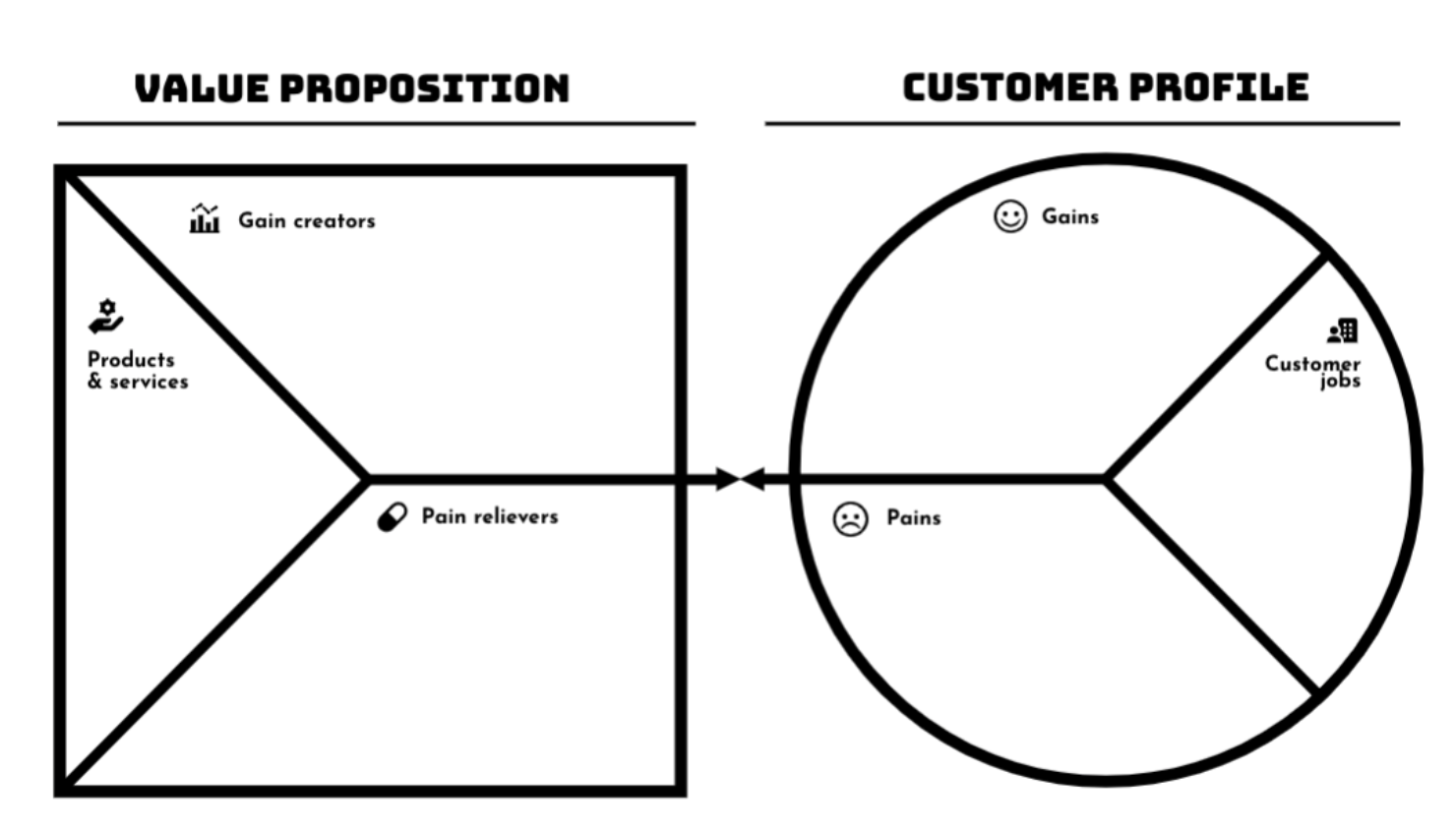If you haven’t built your foundational marketing machine — you haven’t built anything.
This is a message we — at StepUp — spend a lot of time trying to communicate to our audience and our clients.
We know you’re hungry for leads, and we know you’ve picked up a variety of pretty solid instincts about how to convert your leads into sales. But building a pipeline — a marketing machine that consistently refreshes your leads pool with new qualified leads takes significant strategic know-how and a solid investment of time and money.
So, what’s the right way to spend, and craft your annual marketing budget, when you’re cash-strapped, time-crunched, and aching for new customers? We’ve broken it down for you into the five steps below — with some wisdom on how to structure your marketing dollars thrown into the mix.
Spoiler: We’re going to keep on recommending that you hire experts to do your initial go-to-market strategy (you know, like us).
In a world that’s become besieged by AI-fueled quick fixes (not that we don’t love AI), and performance marketing hijinx it has never been more vital to do ?? the ?? work ?? to craft a solid, well-researched, message and marketing plan.
We’re honored to work with some wonderful clients who’ve taken this important message to heart (and a few who wish they had done so several years earlier), and we’ve learned a lot about how to get your early-stage B2B company off the ground and running. Read on to learn!
Step 1: Set Clear Big Picture Goals (Spoiler: Your Goal is Always Leads)
This might be stating the obvious, but all of your marketing efforts should be designed to attract qualified prospects who are interested in your product or service.
But far too many businesses skip the MQL (marketing qualified leads) phase of business development growth, neglecting to build a pipeline of warm and open prospects and focusing instead on cold outreach via their sales team.
Not Just Any Leads: Marketing Qualified Leads
Setting clear goals around acquiring MQLs orients you toward building your pipeline — and gets you thinking about data-driving metrics such as lead acquisition cost, conversion rates, and return on investment of pipeline inbound marketing content — this will help you assess the effectiveness of your marketing efforts and make necessary adjustments along the way.
When setting your lead generation goals, it is important to consider various factors that may impact the success of your marketing campaigns. These factors include your target audience, industry trends, competitive landscape, and available resources. By taking these factors into account, you can set realistic and achievable goals that will drive your business forward.
Just as not all leads are the same, not all marketing activities and tactics are equal, and some may be more effective in generating leads than others. By understanding your goals, you can allocate your budget and resources to the strategies that have the highest potential for success (this is called “optimization”).
MQL Goal Clarity is Motivating for Your Marketing Team
Additionally, setting clear goals provides a sense of direction and purpose for your marketing team. When everyone is aligned on the overarching objective of lead generation, it becomes easier to collaborate and work towards a common goal. This alignment fosters a cohesive and focused marketing strategy, resulting in more impactful campaigns. As obvious as this sounds on paper, for the most budget-stressed team in most businesses — goal alignment is crucial to manifesting aligned creative energy and helping team members feel invested in being a part of the solution. Don’t overlook it.
Moreover, having measurable goals allows you to celebrate successes and identify areas for improvement. When you achieve your lead generation targets, it serves as a validation of your marketing efforts and motivates your team to continue their hard work. On the other hand, if you fall short of your goals, it provides an opportunity to analyze what went wrong and implement changes to enhance your future performance.
Step 2: Consider all Your Potential Marketing Costs
Like a parent at a grocery store with their kids — our inclination when budget setting is to figure out how to “take stuff out of the cart”.
Penny-pinching is understandable but I urge you to set your red pen aside and dream big when drafting this spreadsheet.
Early-stage B2Bs usually have big goals (“I’d like to eventually dominate the North American market!” is a sentence I hear more often than you realize). And big marketing goals are great! But they require big marketing visions — and the courage to execute. That doesn’t mean you’ve got to do it all today — or even this year — but a realistic snapshot of what efforts you might undertake, and what they’re really going to cost is essential.
Prepare for Paid Advertising
As B2B marketers, we want our message to reach the right audience, and that means allocating toward paid advertising spending. Whether it’s on Google, social media platforms, or wherever our target audience may be, we want to be there with our brand. After all, what good is a killer marketing strategy if it’s not reaching potential customers? So, when it comes to setting our marketing budget, we need to make sure we’ve got some allocated for digital advertising. That’s where the magic happens. By strategically placing our ads on the right advertising channels and boosting visibility, we can directly reach our target audience to generate brand awareness and ultimately qualified leads.
Bottom Line –> Have a digital marketing budget that includes enough money for a comprehensive digital spend: on PPC, LinkedIn paid Ads, Google Display, and wherever your audience lives online.
Invest in Content, Content Management Tools (and a Martech Stack)
Content Marketing (this includes social media marketing) is the backbone of any marketing strategy, it plays a vital role in attracting and engaging potential customers around their pains gains, and wants. But these days, content is more than a killer 2000-word blog (like this one), it’s about keyword optimization, SERP scores, and integration.
Your content tools should include talented writers and content creators, but they’ll also need to make room for your tech stack — from SEO optimization and Google Analytics tools to AI batch generators to distribution management software (ie: HubSpot) — the content marketing world is its own ecosystem and gone are the days when you can neglect those vital aspects of your content marketing strategy.
Bottom Line — budget for creating great content — and the tools you’ll need to make sure people see it.
Event Marketing Works, Put it in Your Company Budget
Event marketing is crucial for boosting brand visibility, and incorporating it into your budget is a must-do. Whether it’s through digital or in-person industry events that you attend (or host!), this powerful marketing strategy offers opportunities to connect with potential customers, showcase your products or services, and establish your brand as a thought leader in your industry.
Bottom Line — From digital webinars to industry booths, budget for participation and marketing to show up as a thought leader in the right spaces.
A Budget Line for Salaries, External Hires, and Marketing Agencies
This topic deserves its own whole blog (or book). But suffice it to say that talent costs and talent matters. Make sure you’ve got your ad spend separate from your salary and contract spend — hiring the right people — the people who know how to do what you need to be done (and no, you cannot “wing it” on SEO anymore so cut that out), is simply a must.
Step 3: Hire an Early-Stage Expert to Build Your Go-To-Market Machine (yes, we’re talking about us)
Speaking of a budget for hires and agencies: Step 3 in building an effective B2B marketing budget is in planning — intentionally — to hire GTM experts to build your marketing machine (ideally BEFORE you begin investing in tactics and channel marketing).
As impressive, capable, and vital as your in-house marketing leader hire (CMO, marketing manager, etc.) is — creating a GTM strategy and building a solid marketing machine pipeline is its own specific skill set. We highly recommend that you plan and budget for this investment out of the gate (and our business is made of supporting companies who need this — we’re really speaking from experience here).
So what exactly IS a Go-To-Market Strategy / Machine?
In short, a GTM Machine is a framework (or pipeline) that is designed to generate demand from your ideal target market. It’s a strategy for who you’re going to talk to and how you’re going to talk to them that is based on a deep understanding of your services and products as well as a deep understanding of the market you’re targeting.
As a business owner, partnering with early-stage marketing experts (who specialize in B2B) to craft this crucial strategy will save you heaps of time, money, and frustration.
- It is the process that every business needs in order to operate from the knowledge of their marketing.
- It is the opposite of (and anecdote to) guesswork and blind experimentation.
- It is the answer to the question ” what’s your plan for business growth?”
- It’s the work/strategy that comes before your sales team picks up the phone or sends an email;
- and more importantly than any of this: it is the foundation upon which will rest all of your effective marketing efforts for years to come.
Here’s What to Expect from Your GTM Machine Architects
- A deep understanding of you, your business, and your products and services.
- A comprehensive analysis of all your competitors, their messages, and their offerings.
- Elaborate persona profiles of your Ideal Customer Profiles (ICPs) that clearly identify their goals, the challenges they face, the solutions they crave, and how you solve their problems.
- Powerful Value Proposition Messaging that marries your product or service with their most painful needs.
- A content strategy that outlines for you the types of content you should be creating so that your ENTIRE funnel is full of awareness, consideration and decision-making messages that compel your potential customers to click on you.
- An execution strategy that tells you where you want to be and how to distribute and deliver your marketing in optimized and effective ways.
- Expert guidance on the right Martech Stack tools to maintain and grow your company. (To go down the rabbit hole of this key topic that often creates budget friction, read this blog, or to check out growth in this marketing department sector based on CMO surveys, read here).
I could go on. A well-executed GTM is not something you can get around, and something you’ll feel the lack of if you don’t invest. Hire these experts — and let them guide your early-stage business down the right path toward growth.
Step 4: Hire Your In-House Marketer and Build Your Team
I know that you know the value of hiring an in-house marketer (or maybe, dear reader, you ARE the in-house marketer — looking to understand your budget and structure needs better).
Whoever you are — our advice for hiring an in-house expert is this:
No marketer is (or should be) a jack of all trades. Find a marketer whose strengths play to your needs. You can hire based on skill set, but hiring based on industry expertise is just as valuable an approach. Whatever you do, understand that you’re hiring a partner; and a good rule of thumb is to invest in wisdom, and be willing to bring in full- or part-time support for them so that they can execute the vision you (and your GTM experts) have crafted.
Step 5: Optimize Your Marketing Pipeline Every Six Months
Okay! Whew! We’re done outlining where you should invest your money.
You’ve got your marketing budget lines clear and a plan you’re ready to implement.
Just remember to put a little cash aside for some strategy refreshes twice per year.
Why? The market changes.
Audience behavior changes, keyword costs change, digital advertising changes.
Bring in your GTM experts to do a check-in once in a while to make sure that you’re course correcting along the way (and to avoid waking up one day and realizing that your target market just isn’t where you are anymore).
Regularly analyze your marketing metrics to determine which marketing channels are generating the most leads and conversions. Consider A/B testing different ad creatives, landing pages, and email campaigns to optimize your conversion rates. Adapt your messaging and tactics based on customer feedback and market trends.
The digital landscape is dynamic, and consumer behavior is constantly evolving. Regularly reviewing your marketing efforts enables you to identify what’s working and what’s not, allowing you to make informed decisions regarding resource allocation.
Remember that B2B marketing budgets are not set in stone. They should be agile and adaptable to accommodate changes in your industry, market conditions, and customer preferences.
By following these steps and staying committed to continuous improvement, you can build a marketing budget that maximizes your investment and drives sustainable growth for your early-stage B2B marketing department. So, set your marketing goals, evaluate your costs, seek expert guidance, build your team, and optimize your pipeline.
With these strategies in place, your B2B marketing budget will be a powerful tool for propelling your business forward.
For more nitty-gritty marketing budget advice, check out HubSpot’s blog on the topic (we’re proud to be HubSpot partners and love their resources on these topics).







